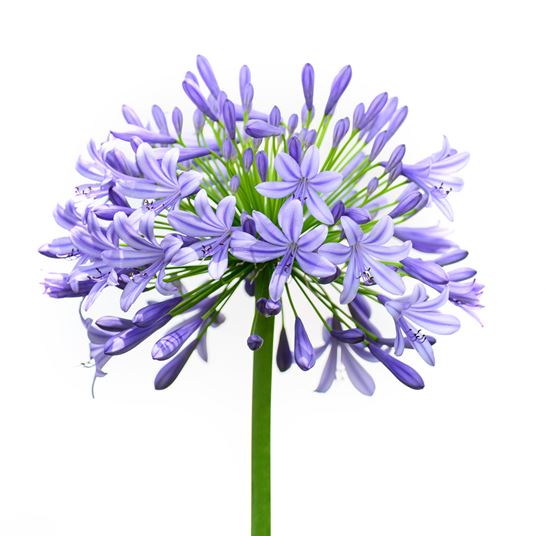Agapanthus Companion Plant Kingdoms: Perfect Pairings for Your Yard
Agapanthus Companion Plant Kingdoms: Perfect Pairings for Your Yard
Blog Article
Understanding the Art of Agapanthus Care: Crucial Actions for Healthy And Balanced Growth and Vivid Blooms
In the realm of horticulture, the growing of agapanthus stands as a gratifying endeavor for those who seek to nurture these elegant flowering plants. With their striking flowers and stylish foliage, agapanthus has recorded the focus of gardeners worldwide. However, achieving optimal development and vibrant blooms needs a nuanced technique that includes numerous vital steps. From selecting the right range to understanding pruning methods, the trip in the direction of growing thriving agapanthus plants is diverse and holds the crucial to unlocking the complete capacity of these herb treasures.

Choosing the Right Agapanthus Selection

When selecting the right Agapanthus variety for your garden, take into consideration variables such as climate viability, flower shade, and growth routine. In addition, take into consideration the climate in your area to make certain the Agapanthus selection you choose can thrive in your details conditions. Understanding the development routine of different Agapanthus varieties is crucial for correct placement within your garden.
Perfect Planting Conditions
Taking into consideration the ideal ecological demands is necessary for successful Agapanthus cultivation. Agapanthus plants are delicate to cold temperature levels and need to be safeguarded from frost throughout wintertime months.
To make certain healthy development and lively flowers, plant Agapanthus bulbs at a depth of regarding 2-4 inches and space them 8-12 inches apart. Adding raw material, such as compost, to the dirt can improve water drainage and fertility, advertising robust origin development. Mulching around the base of the plants aids retain wetness and suppresses weed growth. Normal watering is important, specifically throughout the expanding period, to keep the soil regularly wet yet not saturated.
Watering and Fertilizing Tips
Keeping proper dampness levels and giving essential nutrients are vital components in the treatment regimen for Agapanthus plants. When it comes to watering Agapanthus, it is important to strike a balance. These plants favor constantly wet dirt however are susceptible to root rot if overwatered.
Feeding Agapanthus is necessary for promoting healthy growth and respected blooms. Use a balanced fertilizer, such as a 10-10-10 formula, in the early springtime as brand-new growth emerges. Repeat this application every 6-8 weeks throughout the expanding period. Stay clear of excessive fertilizing, as it can result in lush vegetation at the expense of blossoms. Always adhere to the maker's instructions for correct dilution and application methods. By adhering to these watering and fertilizing suggestions, you can guarantee your Agapanthus plants flourish and generate lively, durable flowers.
Pruning Strategies for Agapanthus
Pruning Agapanthus plants at the appropriate times and with appropriate methods is crucial for keeping their health and wellness and promoting ideal development and blooming. The ideal time to prune Agapanthus is in late winter or early springtime prior to new growth emerges.
Deadheading invested blossoms can also redirect the plant's power right into creating even more blooms instead than setting seeds. If you desire to accumulate seeds for reference proliferation, leave some flowers to dry and mature on the plant.
Remember to utilize tidy, sharp devices to make exact cuts and minimize the risk of presenting illness. Agapanthus. Regular pruning will aid maintain your Agapanthus looking healthy and balanced and cool while making sure an abundant display screen of lovely flowers
Dealing With Typical Insects and Diseases
After making certain correct trimming techniques for Agapanthus, it is vital to deal with usual bugs and illness that can impact the wellness and vitality site of these plants. Agapanthus plants are usually sturdy but can still succumb particular problems. One common parasite that affects Agapanthus is the Agapanthus gall midget. This little, orange fly lays its eggs in the foliage, bring about distorted development and blossom buds that fall short to open. To fight this pest, prune and damage any affected plant components and consider making use of insecticidal soap.
In addition, Agapanthus plants can suffer from origin rot if they are grown in improperly draining soil. By being watchful and taking prompt action against insects and illness, you can help your Agapanthus plants thrive and produce lively blooms. Agapanthus.

Conclusion
To conclude, understanding the art of agapanthus care entails selecting the ideal range, providing excellent planting conditions, proper watering and fertilizing, suitable trimming strategies, and attending to common parasites and conditions. By following these vital actions, you can guarantee healthy and balanced click for more info development and dynamic flowers for your agapanthus plants. Bear in mind to routinely check and preserve your plants to advertise their general well-being and durability.
To make certain healthy and balanced development and vibrant blooms, plant Agapanthus bulbs at a deepness of concerning 2-4 inches and space them 8-12 inches apart. By complying with these watering and feeding suggestions, you can ensure your Agapanthus plants flourish and produce lively, long-lasting flowers.
One usual parasite that affects Agapanthus is the Agapanthus gall midget. Additionally, Agapanthus plants can experience from origin rot if they are grown in poorly draining soil. By adhering to these essential actions, you can guarantee healthy development and dynamic blooms for your agapanthus plants.
Report this page